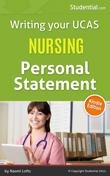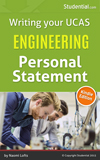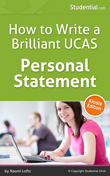Places on drama school courses are over subscribed to a ridiculous level so being offered a course interview is a real achievement and your personal statement can be the key that opens the door to this.
Your 4,000 characters/47 lines personal statement, when you spend time on it to polish it to shine brightly, should gain you an interview (including an audition piece) a course place and ultimately help you start your performing arts journey.
But how do you thoroughly polish it? You want to come across as creative, passionate and eloquent, so what’s the best way to achieve this?
1. Explore, investigate and discover
Before you write your personal statement make sure you know exactly which drama school you want to study at, as the course modules may be a tad different as well as slightly varying entry criteria.
It’s vital to remember that you write one personal statement on your UCAS application for all your drama school choices so really try to shape what you write to match your choices.
If possible, phone and chat with your course admission tutors and ask them what they’re looking for on their specific personal statements.
If this isn’t possible the drama school social media accounts and websites are jam-packed full of valuable material.
2. Highlight your talents
Within your drama school personal statement show how much you love drama by highlighting your performing arts experience.
If you’ve been in a school play, say what you’ve learned from it and why it ignited a passion in you. Be honest, and be personal; don’t over exaggerate but show how you want to learn more about the creativity and craft of drama.
Have you helped out at a local community theatre in the evening or at a weekend, even if just collecting tickets or prepping costumes back stage? Think about the team work and customer interaction experience you’ve become a dab hand at. These skills are also needed at drama school and show your enthusiasm for wanting to be a part of performing arts.
Have you taken part in any drama competitions, public speaking at presentations/events or chatted on local/community radio? Are there village drama groups or am-dram groups you’ve joined or acted in? This is all relevant and should be included to show what you achieved and learnt.
Only write about your hobbies which you can link to drama and explain how. For example, if you and your friends have made short videos and films even with your mobile phones, and posted them on YouTube or other social media channels, say what you’ve learned from them and why it’s relevant to a drama school course.
If you link any of your personal statement to specific directors, actors, film makers etc., show how your fascination with them links to the professional aspects of your drama course and shines a light on your analytical and critical thinking skills. These are core attributes for drama courses.
It’s worth noting that you may be asked to chat about these comments in your interview so you do need to know your subject inside out.
3. Practice makes perfect
Drama involves a lot of practice and rehearsal to make it perfect. Your personal statement is no different.
Plan in sufficient time to reread, proof, sense check and redraft your personal statement until it’s the best it can be. Focus on lively and engaging content, accurate grammar and precise punctuation and spelling.
Ask family and friends to check it over for you. Your school/college tutors have worked with students in previous years on similar drama school personal statements. Take advantage of their knowledge and experience. You can also check out our drama school personal statement examples as great templates to guide you.
Treat your personal statement like the monologue audition of your life.
As the star of the stage, own it and deliver your monologue with an impactful opening, thrilling and honest content with a sucker punch closing statement. You’ll then have stolen the show and the floor will be all yours at your course interview!
Further information
For more tips and advice on applying for a Drama degree, please see:




